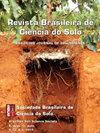促进桉树生长和生产力的最佳耕作方法:巴西经验综述
IF 2
4区 农林科学
Q3 SOIL SCIENCE
引用次数: 6
摘要
商业桉树林业在过去几十年里显著增加,以满足对森林产品(纸浆、造纸、锯木厂、副产品工业以及用于生物能源和生物燃料的生物质)日益增长的需求。在影响森林生产力的因素中,土壤物理环境是非常重要的,对树木可能有害也可能有益。为了提高商业人工林的环境和经济可持续性,本文综述了土壤类型和性质、森林轮作、森林生长和生产力之间的关系。土壤机械化耕作必须考虑土壤类型,特别是土地坡度、土壤排水和深度,以及森林轮作(一级或高一级)。因此,土壤调查,包括土壤物理特性(例如,压实,包括砾石在内的粒度测量)和形态属性(例如,视界,土壤深度,地下排水阻抗),对于林业人员做出明智的土壤耕作决策至关重要,前提是耕作是桉树林业中最昂贵的一种做法。深埋是桉树最常见的土壤耕作方式,但它最适合深、排水的土壤。现有的科学出版物表明,对于粘性粘土或压实土壤,耕作深度为0.70 m(深埋)可以改善微孔率低且根系生长受限制的压实土壤,但0.50 m(浅)深埋加除草产生相似的结果。然而,后者的运营成本更高。松软土地上的下坡沉土增加了土壤侵蚀的风险,可以通过中断撕裂、机械化钻孔等低成本的方法来降低土壤侵蚀的风险。在施肥时进行凿凿(至少0.25米深)可能是对未压实的沙质土壤唯一需要的耕作。机械或人工点蚀也可以作为第二轮或更高轮的选择,但结果表明,作物的早期生长受到限制,可能是因为根的限制。对于第二次或更高的旋转,树桩需要切割,以便跨坡拖拉机通行和耕作。在低排水或浅层土壤中,需要深埋加垄或垫层,以增加根系探索的土壤体积。这些垄可以用等级垫层或梯田犁来建造。在有内涝的地区,必须进行排水和不打地基的垄沟。研究机会包括对坡地和低排水或压实土壤的进一步研究,影响土壤侵蚀和桉树生产力的耕作,特殊耕作设备,以及测绘压实风险和特殊耕作需求。本文章由计算机程序翻译,如有差异,请以英文原文为准。
Best tillage practices for eucalyptus growth and productivity: A review on the Brazilian experience
Commercial eucalyptus forestry has significantly increased in the last decades to supply the growing demand for forest goods (pulp, paper, sawmill, by-product industries, and biomass for bioenergy and biofuels). Among factors most influencing forest productivity, the soil physical environment is very important and can be harmful or beneficial to trees. In the effort to increase environmental and economic sustainability of commercial plantations, in this literature review, we summarize relationships between soil type and properties, forest rotation, and forest growth and productivity. Mechanized soil tillage must consider soil type, particularly land slope, soil drainage and depth, along with forest rotation (first or higher-order). Soil surveys, including soil physical properties (e.g., compaction, granulometry including gravel) and morphological attributes (e.g., horizons, solum depth, subsurface drainage impedance), are thus essential for foresters to make knowledgeable decisions on soil tillage, provided tillage is the single most costly practice in eucalyptus forestry. Subsoiling is the most common soil tillage for eucalyptus, but it is best for deep, drained soils. Existing scientific publications show, for clayey cohesive or compacted soils, tillage depth might be of 0.70 m (deep subsoiling) to ameliorate compacted soil of low microporosity and restriction to root growth, but 0.50 m (shallow) subsoiling plus ridding produce similar results. The latter, nonetheless, has a higher operational cost. Downslope subsoiling on sloppy lands increases the risk for soil erosion, which may be reduced by interrupting ripping, mechanized holeor pit-drilling with low operational cost. Chiseling performed for fertilizer application (minimum 0.25 m deep) might be the only tillage required for non-compacted sandy soils. Mechanical or manual pitting could also be an option for second or higher rotations, but results show crop early-growth is restricted, possibly because of root confinement. For second or higher rotations, stumps require cutting to allow cross-slope tractor traffic and tillage. Subsoiling plus ridging or bedding is required in low-drainage or shallow soils to increase the soil volume to be explored by roots. The ridges can be built by grade bedding or terracing plows. In areas with waterlogging, drainage and ridging without subsoiling are necessary. Research opportunities include further studies for slopy lands and low-drainage or compacted soils, tillage affecting soil erosion and eucalyptus productivity, equipment for special tillage, and mapping compaction risk and special tillage needs.
求助全文
通过发布文献求助,成功后即可免费获取论文全文。
去求助
来源期刊

Revista Brasileira De Ciencia Do Solo
农林科学-土壤科学
CiteScore
3.00
自引率
11.80%
发文量
32
审稿时长
9-24 weeks
期刊介绍:
The Revista Brasileira de Ciência do Solo is a scientific journal published by the Brazilian Society for Soil Science (SBCS), founded in 1947, and is responsible for the propagation of original and inedited technical-scientific work of interest for Soil Science.
Contributions must not have been previously published or submit to other periodicals, with the only exception of articles presented in summarized form at professional meetings. Literature reviews are accepted when solicited by the Editorial Board.
 求助内容:
求助内容: 应助结果提醒方式:
应助结果提醒方式:


